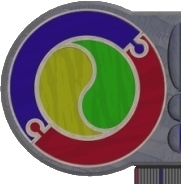 |
|
 |
| |
eXercise #5
Binary Branching
using IF..THEN
- Write fragments
of code which accept an integer value from the user as a string and
which indicate:
- if the number
is positive, negative or zero.
- if the number
Is divisible by 2 or divisible by 3.
- the reciprocal
of the number (i.e., l/number) as a real number to five decimal
places (if it has a reciprocal).
- Write a segment
of code which accepts a character value from the user and which prints
out the next letter in the alphabet. If the character 'Z' is typed,
the letter 'A' should be returned. If the character typed in is not
an uppercase letter, the machine should write 'Not an upper case Letter'.
- Explain why the
following code would be classified as an abuse of the if-then-else
statement (include discussion of best and worst case. Rewrite
the code properly.
var n : integer;
begin
n := random(6)+1;
if n=l then writeln('[.]');
if n=2 then writeln('[:]');
if n=3 then writeln('[:.]');
if n=4 then writeln('[::]');
if n=5 then writeln('[:.:]');
if n=6 then writeln('[:::]');
- TWO-UP is a game
where two coins are tossed and betting occurs based on the resulting
faces of the coins. Then two coins are tossed, the results can be
classified as follows: coin1 coin2 odds evens heads tails
| Coin
1 |
Coin
2 |
ODDS |
EVENS |
HEADS |
TAILS |
| H |
H |
NO |
YES |
YES |
NO |
| T |
T |
NO |
YES |
NO |
YES |
| H |
T |
YES |
NO |
NO |
NO |
| T |
H |
YES |
NO |
NO |
NO |
Write a small but
efficient program that uses a Random(10)+1 call to generate EACH coin,
and correctly classifies the pair as ODDS or EVENS, HEADS or TAILS.
- When mixing colours
using the ADDITIVE SPECTRUM, we get the following results:
| RED |
+
GREEN |
=
YELLOW |
| RED |
+
BLUE |
=
MAGENTA |
| BLUE |
+
GREEN |
=
CYAN |
| YELLOW |
+
BLUE |
=
WHITE |
| MAGENTA |
+
GREEN |
=
WHITE |
| CYAN |
+
RED |
=
WHITE |
Allocate a character
to each of the colours listed above (B=Blue, R=Red etc), then write
a program that displays a menu of colour names and their corresponding
codes, allows the user to input two colour codes and correctly outputs
the NAME and CODE of the resultant colour.
|
|
|
 |
|
 |
|


